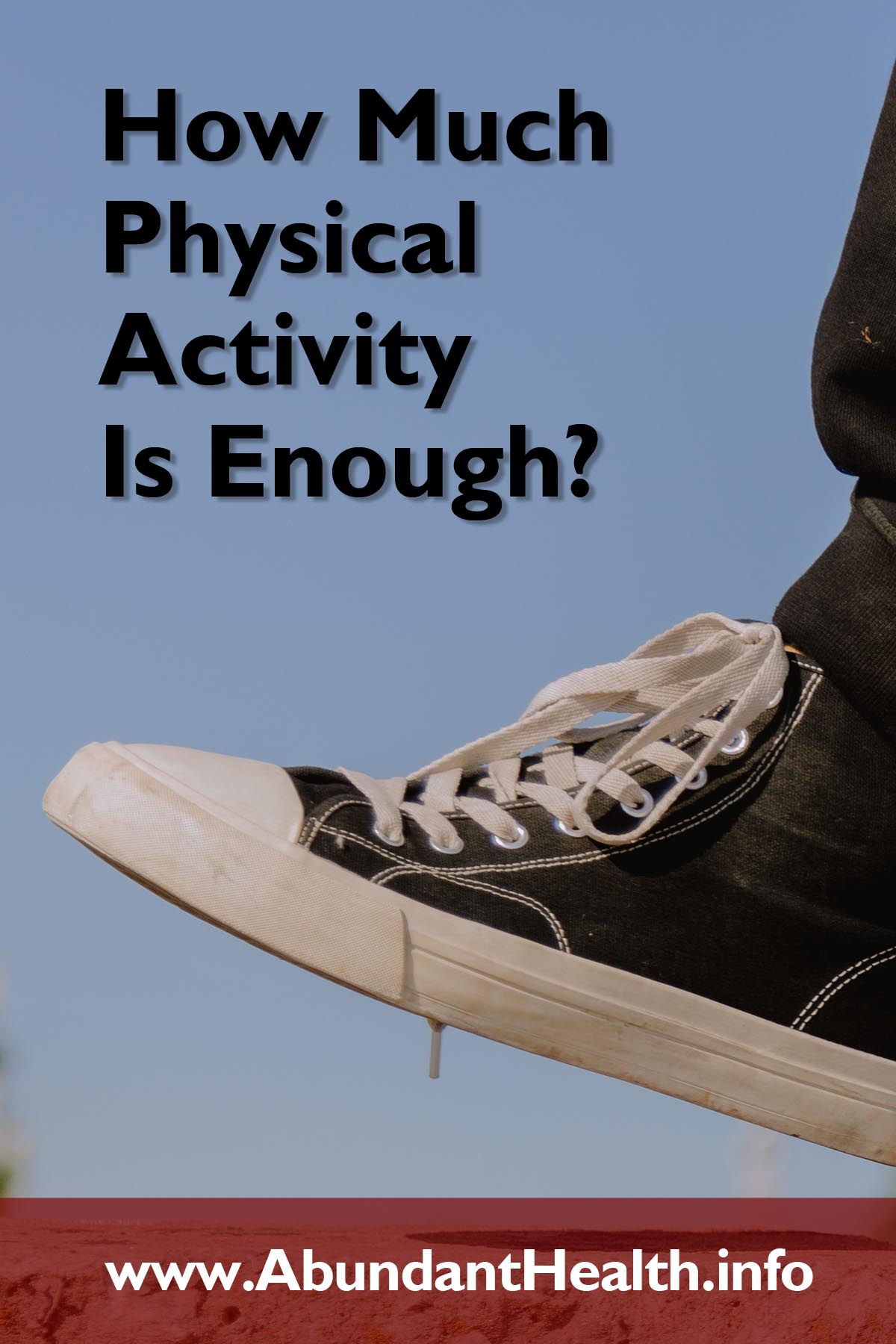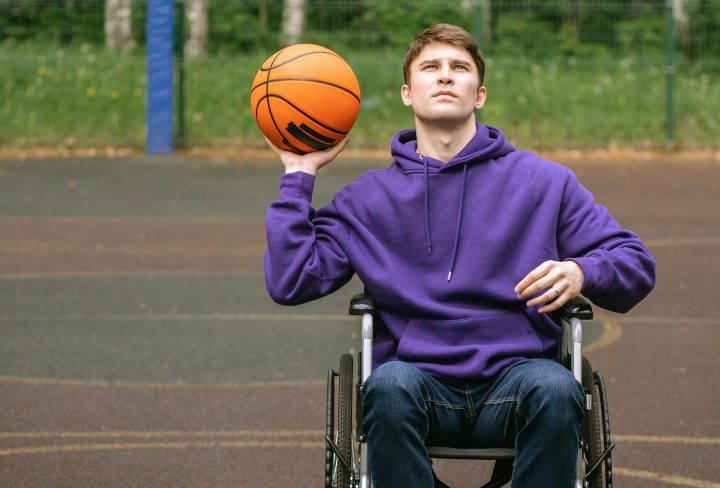I tend to cringe inside when people ask me how much exercise they should do. I do this because typically they are seeking answers that I cannot give them. At times they want some form of affirmation that they are already active enough and that for them, no change is necessary. And, often they are disappointed to hear that they aren’t meeting the recommendations.

I admit that it can be discouraging to think about how difficult it may be to add the recommended amount of activity on top of their already hectic, overbooked daily routine. So, before we look at ways of managing the psychological aspects of a good exercise program (which I believe is just about as important as the exercise program itself), let’s at least give some short answers to the questions concerning how much exercise do experts recommend. Once we get that out of the way, we can move on to focus on the practical aspects of an exercise prescription.
Starting Small Is Okay!
Let me begin with some great news for everyone: any amount of physical activity above what you are accustomed to has some benefit. So long as you are doing more than you used to do there is a degree of self-congratulations in order, however small, at first. If you park at the edge of the parking lot and walk further than you want to the storefront when you stop at the store… that qualifies! If you can stand more and sit less during your day, that’s great. Maybe you can take one flight of stairs instead of just one of the floors you would otherwise stop at when riding the elevator. Maybe that’s your “one small step,” or “one giant leap for mankind” (depending on your level of fitness). So, to repeat: any amount of physical activity above what you are accustomed to has some benefit. Got it? Good. Let’s get it!

Now to be clear, I don’t want you to think is that a little bit of improvement is enough. For my bi-lingual friends, I might say it like this: A little bit is better than nada, but it’s sure not the whole enchilada! Small starts, little changes in habits are indeed important. My friend Vicki Griffin likes to emphasize this truth and highly recommends people read one of her favorite books, Atomic Habits, by James Clear.1)Clear J. Atomic Habits: An Easy & Proven Way to Build Good Habits & Break Bad Ones. Penguin Random House
The point or purpose of making small changes though is to be able to work your way towards achieving larger and lasting changes in your lifestyle. Let’s see what those larger goals are as outlined in the latest CDC guidelines for physical activity.2)Physical Activity for Different Groups https://www.cdc.gov/physicalactivity/basics/age-chart.html
There are separate guidelines for different populations/age groups. I will summarize the recommendations for the main groups below:
- Ages 6-17: One hour of moderate to vigorous aerobic activity every day. On 3 days of the week, these periods of activity should include strength training for muscles and bones as well.
- Adults 18 years and over: A range of 150-300 minutes of moderate aerobic activity per week, or 75-150 minutes of vigorous aerobic activity per week. A range is given because the resulting health benefits are measurably dose-dependent (just like most medications), as well as interchangeable (75 minutes of vigorous activity is equivalent to 150 minutes of moderate activity). Aerobic activity is best spread throughout the week. Additional benefits are seen if you include at least 2 days of the week during which strength training is done for all major muscle groups.
- Pregnancy: A range of 150-300 minutes of moderate aerobic activity per week. If before becoming pregnant, a mother was habitually accustomed to more intense levels of physical activity, these may continue. Her pregnancy should be monitored throughout the prenatal period by qualified professionals.
- Those with chronic medical conditions or disabilities: Recommendations are identical to adults 18 and older if their abilities allow for it. Otherwise, they should avoid inactivity and engage in regular physical activity to the extent allowed by their medical condition.

How to Get Started
There you have it. Those are the shortest answers you can get, inclusive of a wide range of circumstances, that is based on the latest scientific evidence. Of course, all these things are more easily said than done. Everyone needs to start somewhere, even if it is from a place of no exercise at all. In fact, getting little to no exercise at all is not an uncommon situation. If this describes you, please do not be discouraged.
After watching people start and stop, succeed and fail, in their exercise plans (as well as other lifestyle changes), I have come to a settled opinion regarding the initial phase of starting to make changes. My belief is this: in order to maximize the likelihood that someone keeps a commitment to change the way they live, they must first change how they manage their time. I believe that if you do not succeed in setting aside a period of time during which you always do your exercise, something else will easily, without thought or effort, use up that time. You will inevitably find yourself at the end of the day, week, or month having had no time/opportunity to fulfill your exercise goals. Then you may feel like a failure or give up hope.

Don’t Give Up!
Instead, make it a point to establish a habit to spend 5-10 minutes, once or twice every day, focusing on physical activity. By doing it every day, you will within several weeks have established a new habit; a strong new habit of dedicated time for physical activity.
Two major advantages are built into this approach. One is that the new habit is formed as quickly as possible, with as little effort as possible, and without excessive disruption of your current way of life. The second advantage is that it also maximizes the benefit you realize because you’re doing something every day. And THAT is important for making you stick with the program.
This strategy creates a space in time (5-10 minutes 1-2 times a day) for physical activity that is easily obtainable and allows each person to pick whatever type of exercise they want. Being consistent with the time commitment is the key. Unless, and until, people have a consistent amount of time with which to exercise, not even an expert trainer and the perfect plan will amount to anything.
You may be thinking, “How will 10 or 20 minutes transform my life?!” Well, it may not initially. But it will if you then extend those 5-10 minute sessions to 30-60 minute sessions over time. I tell people to start with 5-10 minute commitments because it’s easier to achieve, and they can form a habit of daily exercise. After having success with the time commitment, they usually are set for an activity commitment.
Call to Action
So the important thing is: Start with something today! Next time, I’ll talk with you more about various activities. Until then…carve out some time each day and start forming your exercise habit.

Stay Always Up to Date
Sign up to our newsletter and stay always informed with news and tips around your health.
This article was originally published on the Time to Get Ready website.

Franklin initially trained as a medicinal organic synthesis chemist, now he is double board-certified in Anesthesiology and Lifestyle Medicine. In 2011 he decided to move into a country property, and enjoys remodeling his home, building furniture, growing his own food and being involved in his local church.
References
| ↑1 | Clear J. Atomic Habits: An Easy & Proven Way to Build Good Habits & Break Bad Ones. Penguin Random House |
|---|---|
| ↑2 | Physical Activity for Different Groups https://www.cdc.gov/physicalactivity/basics/age-chart.html |
Leave a Reply